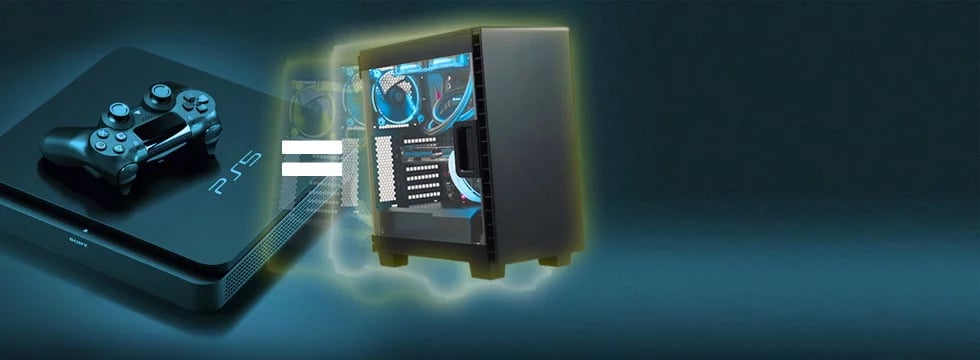PC equivalent of PS5 – Processor. Is 2020 the Right Moment to Get a PC? Comparison with PS5

- Is 2020 the Right Moment to Get a PC? Comparison with PS5
- PC equivalent of PS5 – Processor
- PC equivalent of PS5 – RAM and PSU
- PC equivalent of PS5 – GPU
- PC equivalent of PS5 – SSD
- PC for the price of PlayStation 5 – is it even possible?
PC equivalent of PS5 – Processor

An eight-core, 2nd-gen Ryzen processor ought to cost about $300, which is already 60% of our assumed budget. Take AMD Ryzen 3700X – an eight-core, sixteen-thread monster whose performance will be significantly higher from what we will see in the PS5. The architecture will be the same, but the speed will be reduced (CPU clock itself) to save energy, which in turn will reduce heat generation – a key element of a sealed console.
There is also the question of pricing of this processor at the turn of 2020 and 2021. If history teaches us anything, it's that after the release of the new AMD processors, the price of the previous generation falls sharply. Subsequent models should appear in this period, so we can safely assume that in 2021, Ryzen 3700X will cost a little above $200, as do Ryzen 7 processors now (2700 and 2700X). Since the 3700X is the weaker unit of the second-generation Ryzen 7 series, let's assume that it will cost about $170.
Did you know?
Is it even possible to pack a Ryzen 3700X with an RX 5700 core and media encoders on one piece of silicon and mass produce it? Absolutely. PlayStation 4 has a chip the size of 348 mm2, and PS4 Pro only 325 mm2. Not only was the performance improved, but also the technological process was reduced from 28 nm to 16 nm. Modern AMD components, such as Ryzen 7 3700x and Radeon RX 5700, use a 7-nm process, which is at least half the size of those in PS4 Pro. The processor itself is only 80 mm2 (not counting the memory controller), and the Radeon 5700 core is 251 mm2. All of this can be seamlessly squeezed into a single piece of silicon, which after several optimization procedures (i.e. reducing clocks and cache memory) will not consume more power than PS4 Pro.
We should also look at more mainstream processors, such as Ryzen 2600/3600 and Intel Core i5 9400f. The first can be purchased for $120, the i5 for $160, and Ryzen 3600 for about $180. Each of these processors can boast of the power comparable to the assumed PS5, but the problem is not performance on paper, but the amount of resources. Core i5 9400f loses on the spot, because the bare 6 cores (without multithreading) will result in hiccups as larger games on the PlayStation 5 are launched. This is exactly what happened with Quad-core i5 7000 with Ryzen 5 1600. In 2017, the processors had similar performance in games, and in some of them, Intel's Quad-core processor was winning because developers didn't requrie multi-thread processors. In today's games, Ryzen 1600 wins almost invariably, because it has more resources to take on. And it's not a matter of differences of a few percentage points – this is the difference between stable 60FPS and... well, unstable ~40. The second proof of the bare core problem is a comparison of Core i5 Quad-core with Core i7. The latter supports multithreading, and so far there are no problems with dropping FPS in games.